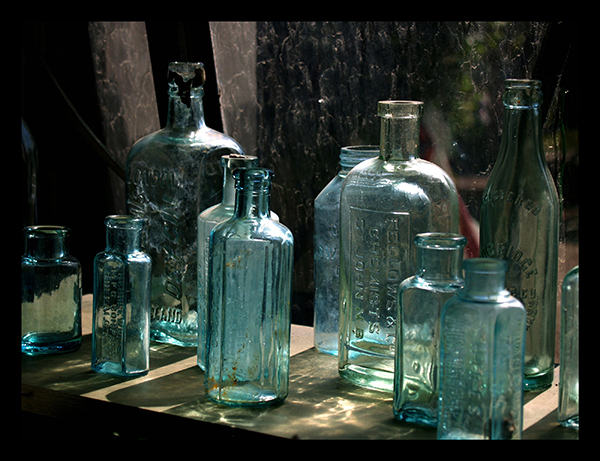To get myself geared up for tomorrow’s meeting about archives metadata, I re-read Mary Elings and Günter Waibel’s article, “Metadata for All: Descriptive Standards and Metadata Sharing across Libraries, Archives and Museums.”1 In the article, the authors liken metadata creation and curation to the beverage bottling industry. Elings and Waibel’s article was one of the first this group discussed. It’s well worth another read.
Before consumption by the thirsty masses, beverages must be funneled into bottles, packaged up, and shipped off to market. Similarly, metadata must be formulated, structured, and packaged before it can be shared, searched, and displayed. I hope the authors of the “Metadata for all” article will not mind that I have sketched an expanded version of their metadata chart to accompany our discussion of metadata standards and tools for managing archival materials.

In the Elings and Waibel metaphor, bottles represent the metadata schemas we use. In order for machines to manipulate data for search and browse indexing and display, metadata has to be structured. Metadata schemas, like Encoded Archival Description (EAD), act like containers or bottles for metadata, thereby providing the needed structure. Schemas like EAD are referred to as data structure standards.
If standards such as EAD (or MODS or Dublin Core) are bottles, then standards that are used to formulate how contents flow into bottles function much like funnels. “Funnel” standards—Describing Archives: a Content Standard (DACS), Anglo-American Cataloging Rules Revised 2nd edition (AACR2), and Cataloging Cultural Objects (CCO)—are called data content standards and they provide instructions for inputting consistent metadata into “bottle” standards.
While Elings and Waibel don’t discuss the interfaces for cataloging and discovery in their article, I’ve taken the liberty of extending their metadata standards metaphor to include examples of tools for packaging and distributing bottles to consumers.

Beverages don’t bottle themselves. Bottling factories utilize machinery and people power to create, bottle, and package drinks for distribution. In this metaphor, the factory is the tool in which an archivist or cataloger does her work. An example of a tool that is currently under development is ArchivesSpace, an open source tool for creating and editing archival description. Currently, archival description work is done in an Oxygen XML Editor. Metadata “factories” are often generically referred to as integrated library sytems (ILS) and content management systems (CMS).
No factory manager wants consumers wandering onto the factory floor for liquid sustenance. The product, whether drinks or metadata, must be sent to a market for use.
In a market, consumers can search and browse for resources. At Indiana University, the archives resources “market,” Archives Online at Indiana University,2 is powered by two open source platforms: XTF3 and METS Navigator.4 A new market tool is also very near completion: ArchivesSpace will function not only as a staff interface (bottling factory) but as a public interface component (market) as well.5 These metaphorical markets are often referred to as discovery layers–an end-user-friendly platform that sits on top of the data.
Here are the standards and tools charted out:
| Archival materials | Bibliographic materials | ||
| Data structure standards | Bottles |
|
|
| Data content standards | Funnels |
|
|
| Data curation tools | Bottling factory |
|
|
| Resource discovery layers | Market |
|
|
* DACS 2nd ed. and ArchivesSpace are both due to be released in late summer 2013.
Elings and Waibel argue that metadata standards grew up to be format-centric, not institution/community-specific. In other words, the EAD and DACS standards that are used to describe archival materials can be used in an archive, a library, or a museum.
Do you use archival metadata standards in your shop?
- Elings, M.W. & Waibel, G. (2007). Metadata for all: Descriptive standards and metadata sharing across libraries, archives and museums. First Monday, 12(3). Retrieved from https://firstmonday.org/ojs/index.php/fm/article/view/1628
- Archives Online at Indiana University. Retrieved from http://webapp1.dlib.indiana.edu/findingaids/
- California Digital Library. XTF. Retrieved from http://xtf.cdlib.org/
- Indiana University Digital Library Program. METS Navigator. Retrieved from http://metsnavigator.sourceforge.net/
- Prom, C. (2011 September 27). Interface Design Principles: ArchivesSpace. Retrieved from http://www.archivesspace.org/documents/specifications/interface-design-principles/
Leave a Reply